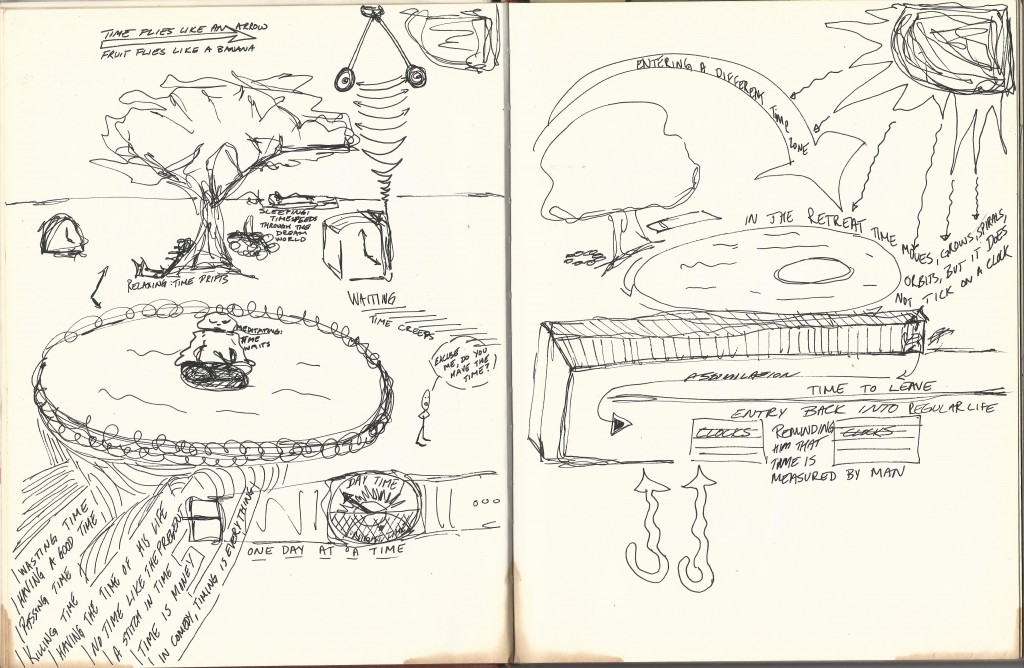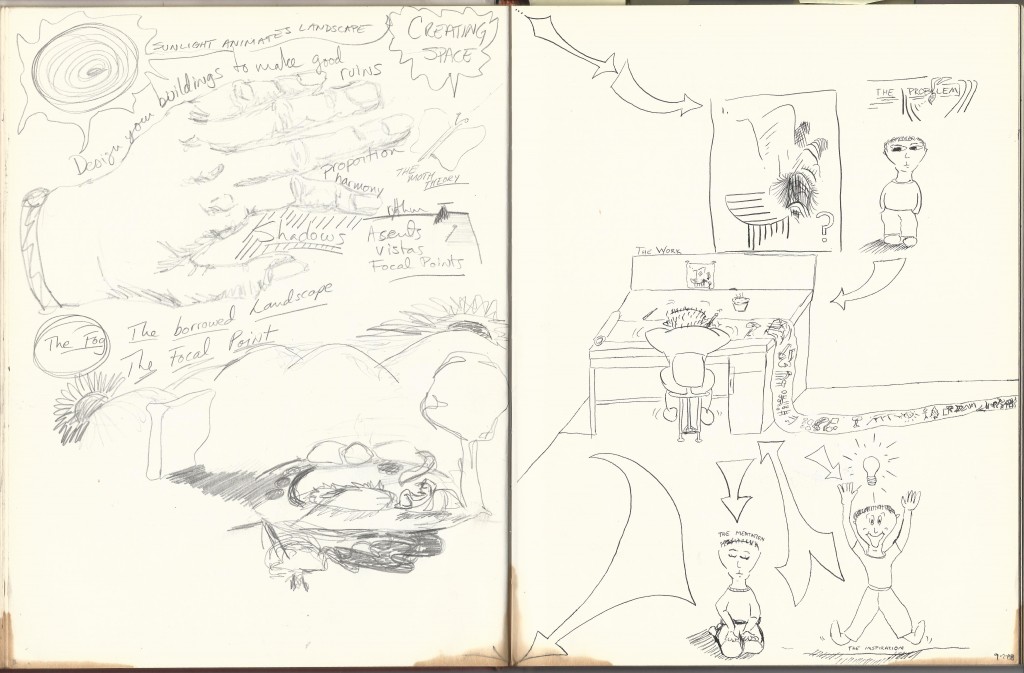Daybook: It’s About Time: First Project, First Recorded Bit of Design Wisdom
In design school, specifically landscape architecture at Cal in 1988, students need to draw all the time, to use the daybook to record thoughts, sketch design concepts, draw benches and other LA elements that catch our eye, take notes in class, until the daybook becomes an extension of the mind. The first thirty pages of my design school daybook contain my musings about time, the central theme of the first project: to design a garden for a client obsessed with time and with a extensive clock collection he wants placed in the garden. Most of my pages looked like this:

I threw in every thought I could conjure about time. Eventually, I will figure out that design, like writing, is about editing.
My first bit of design wisdom came on page 37 (below left), after the sketch of a nude pregnant woman as big as a hillside (a recurring theme in my daybooks: nude women who are also landscapes) and a sketch of my then boyfriend thinking about two peanuts (recurring theme in college: attraction to men with small thoughts). I also used my daybook as a cheap therapist on whom I would dump my frustrations with the design process (below right) and anything else that got my goat.
